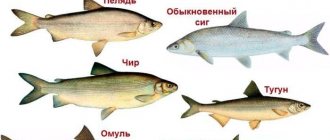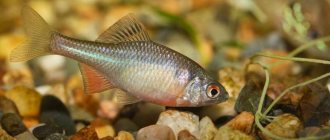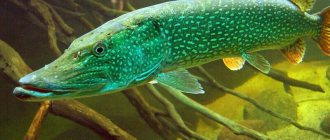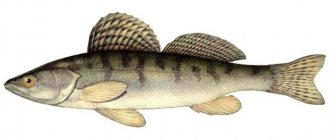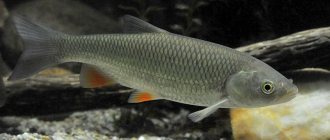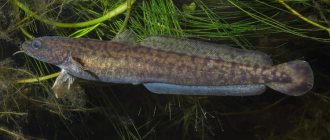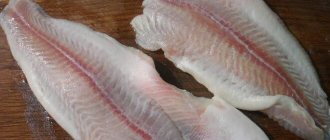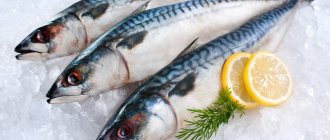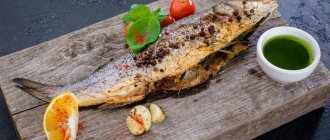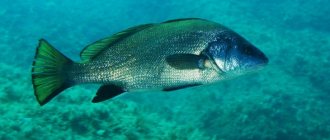Description
It is a freshwater fish and a large predator. Adult fish grow up to 100 cm long and up to 10 kg. weight.
Their body is long, laterally flattened and covered with small scales, which have a rim of black dots along the rear edge. The length of the body is related to its height approximately 4 to 1.
The back profile is almost flat, without a hump. The back is painted in shades of gray-green, while the sides and belly are silver. The dorsal fin is characterized by a thick bony spine and darker tones.
The fins on the abdomen are yellowish, sometimes with a pink coating. Behind them there is a keel. The anal fin is quite long and almost reaches the tail, and the color is the same as that of the ventral ones.
The head is small, low-set, and its mouth is directed upward so that an almost vertical mouth slit is obtained. The stigma protrudes above the eye line. Silver-golden eyes are shifted to the top of the head and allow you to observe everything that happens above it, which gave rise to the name of this fish.
Independent socio-political portal
According to the figurative expression of one of the fishermen, this large fish, called the top-gazer, most resembles a huge herring with a wide mouth in which an arm can fit up to the elbow.
She got her name because her mouth is directed upward, and therefore, when looking at the surface gazer, one involuntarily gets the impression that he is constantly looking out for something above him. Despite some external resemblance to herring, the topgazer actually belongs to the carp fish. It is distributed from the Amur basin to northern Vietnam in the south, inhabiting the rivers of China and western Korea, and is found on the island of Taiwan. In Russia, the topgazer is known from the middle and lower reaches of the Amur, in Ussuri and Lake Khanka, as well as reservoirs in the northwestern part of Sakhalin. It has a slender body, covered with small scales, a low head and an upper mouth, with a slightly protruding lower jaw. On the belly behind the pelvic fins there is a scaleless keel, and one of the rays of the dorsal fin is a smooth and very thick bony spine. The coloration of the leopard is typical of most fish that live in the water column: the back and upper lobe of a well-developed caudal fin are gray or grayish-green, the sides and belly are silvery, the fins are yellowish, sometimes with a pink tint. During spawning, males acquire brighter colors. Their back, dorsal and upper lobe of the caudal fin become almost black; a rim of numerous blackish dots appears along the posterior edge of each scale on the sides of the body; there is gilding on the cheeks, and the edges of the ventral and anal fins darken. It is found everywhere (mainly in riverbeds, channels and lakes), but prefers river flow, where it usually stays in the thickness and upper layers of water at the border of rapids and creeks or below the riffle. In lakes it rarely approaches the shores, living in their open part. Juveniles and small specimens of the leopard lead a gregarious lifestyle, sometimes forming significant aggregations. However, as the size increases, the number of fish in schools decreases, and the largest specimens of this predator, as a rule, stay alone. Verkhoglyad belongs to the category of fairly large species of freshwater fish, since with a lifespan of 11-12 years, its maximum dimensions reach more than 1 m (a case of catching a specimen 102 cm long is reliably known), and its body weight is 9 kg. However, catches most often contain individuals up to 50 cm and 2 kg in size. Unlike many other carp fish, which use various aquatic invertebrates and plants as food, the topgazer is a pronounced predator, feeding mainly on small fish in the water column. He prefers to hunt in places where a fast current is combined with a backwater, for example, behind a river cape or island. The composition of its food is quite diverse and varies depending on the season and habitat (river bed or lake). However, the main food items for adult leopards in the Amur basin throughout the year are such massive representatives of the ichthyofauna as crucian carp, chebak, seaweed, smelt, etc. In addition to fish, the diet of young leopards includes aquatic insect larvae, as well as mayflies and caddis flies during their mass outbreak. departure. They don't disdain shrimp either. The leopard becomes sexually mature at the age of 6-7 years with a length of about 40 cm. It spawns in late spring - the first half of summer. At the northern border of its range in the Amur, its spawning usually occurs in July during summer floods in the riverbed near sand spits when the water warms up to 18-20°C. On average, each female leopard spawns more than half a million eggs, the development of which takes place in the water column. The juveniles hatching from the eggs are carried by the current into bays and floodplain lakes, where they intensively feed on planktonic organisms and grow rapidly. Having reached a length of 7 cm, young leopards switch to a predatory lifestyle, beginning to consume the juveniles of other fish, mainly having a slender body shape. In autumn they go into large channels. After spawning, adult individuals migrate to feed in lakes and river channels. With the onset of autumn, they, like juveniles, move to the main channel, but unlike many other Asians living in the waters of the Amur, they do not lie down for the winter, but continue to lead an active lifestyle, feeding on small fish. Scientists believe that this is due to the fact that the surface gazer was able to adapt to the cold much better than its other heat-loving counterparts. Although the topgazer in the Amur basin is considered a commercial fish, which is traditionally caught with cast seines and fixed nets, in the last two decades its annual recorded catch here does not exceed several tons. The meat of the leopard has a delicate and mild taste (although quite bony) and, along with other carp fish, is widely used in Chinese cuisine. Verkhoglyad is usually sold fresh, salted and smoked. However, along with its commercial use, the topgall in the Amur basin is a very popular object of amateur fishing, and therefore is caught in considerable quantities by amateur fishermen. They catch the topgazer with a spinning rod on oscillating and rotating spoons, fly fishing, bottom and float rods. Small live fish or parts of it, shrimp, worms or insects are used as bait. If medium-sized specimens of the glider hunt mainly one to two meters from the surface of the water, then the largest specimens prefer to stay at a depth of about 4-5 m. Although the best bite of the glider is observed, as a rule, in June-July, it can be caught all year round, so how this predator is almost always active. Being a fairly common fish in the middle and lower reaches of the Amur, the topgazer may at first glance seem like an easy prey for an amateur fisherman. But this is far from true, since the predator actively moves around the reservoir depending on a number of factors (including temperature and transparency of water, lighting, availability of food items, etc.), and therefore it is not at all easy to find it. When fishing, especially if a large specimen is hooked, the topgazer puts up stubborn resistance, being a worthy opponent. Therefore, the fisherman will have to tinker with it quite a bit, showing not only dexterity, but also strength and composure.
Behavior
The topgazer is a schooling fish and the smaller the individuals, the larger schools they gather. Likes to be in the water column or closer to the surface. Larger ones usually stay alone. It prefers to be in a slow flow of water at the border of rapids and calm water, in converging streams behind islands, in channels and in depressions below riffles.
This predator can also be found under steep banks or cliffs. The larger the fish, the less it rises to the surface, and the more it prefers to stay at a depth of up to 5 meters.
Ultimately, the activity and behavior of a leopard depends on many factors. These include transparency and water level, temperature and lighting, time of year and day, weather and wind. This predator is a descendant of tropical fish that has adapted to cold temperatures and exhibits some activity even in winter.
Ingredients and preparation
We will need a larger leopard fish - it is better to leave the small things for fish soup. And also: lemon, fish spices, half a liter of sour cream, onion, pepper and salt (or a mixture of peppers).
- We remove the scales from the fish and cut off its head, halve it along the ridge, and then cut it crosswise into large pieces.
- Place the pieces tightly in a large container, rubbing them with salt and pepper.
- Top with chopped onion and lemon rings.
- Coat each layer of fish with sour cream. Place tightly enough so that the sour cream saturates the pieces from different sides.
- Cover the dish with the semi-finished product and leave to marinate for an hour. And during this time we will prepare the grill with coals.
- Place the marinated pieces of verkhoglyad fish along with onion and lemon rings on the grill. We put the stove on the coals, turning it over gradually on all sides. Bake until golden brown (cooking time depends on the degree of heat), until cooked.
- Place in prepared dishes. Ready: ready to eat. Goes well with cucumbers, tomatoes, other vegetables and herbs. Wash it down with cold light beer or dry wine.
Spawning (reproduction)
Sexual maturity occurs quite late, at 5-6 years of age, when it grows to 35-40 cm. Spawning begins towards the end of June and in July, when the water warms up to about 18-20°C, with the arrival of the summer flood. In the Amur basin, spawning takes place in river beds near sand spits, and in Lake Khanka - near the western shore.
Typically, the average fecundity of a leopard is about half a million eggs. The eggs of these fish are pelagic, that is, freely floating in the water column and not sticking to underwater objects.
During the spawning period, the color of the males becomes brighter: the back, dorsal fin and upper part of the tail become almost black. After spawning, adult individuals migrate to feed in river channels and lakes.
Lifestyle
The topgazer is a schooling fish and the smaller the individuals, the larger schools they gather. Likes to be in the water column or closer to the surface. Larger ones usually stay alone.
This predator can also be found under steep banks or cliffs. The larger the fish, the less it rises to the surface, and the more it prefers to stay at a depth of up to 5 meters. Ultimately, the activity and behavior of a leopard depends on many factors. These include transparency and water level, temperature and lighting, time of year and day, weather and wind. This predator is a descendant of tropical fish that has adapted to cold temperatures and exhibits some activity even in winter.
The main food of the adult leopard consists of small species of fish: bluebell, blackbelly, gudgeon, Amur chebak, crucian carp and others. The juveniles first feed on plankton and insect larvae. When it reaches 6-7 cm, it switches to feeding on fish fry. In addition, an important role in nutrition is played by flying insects such as mayflies, which during flight fall en masse onto the water surface and become easy prey.
Sexual maturity occurs quite late, at 5-6 years of age, when it grows to 35-40 cm. Spawning begins towards the end of June and in July, when the water warms up to about 18-20°C, with the arrival of the summer flood. In the Amur basin, spawning takes place in river beds near sand spits, and in Lake Khanka - near the western shore. Typically, the average fecundity of a leopard is about half a million eggs. The eggs of these fish are pelagic, that is, freely floating in the water column and not sticking to underwater objects. During the spawning period, the color of the males becomes brighter: the back, dorsal fin and upper part of the tail become almost black. After spawning, adult individuals migrate to feed in river channels and lakes.
Verkhoglyad bites well almost all year round, and best of all with the beginning of the summer flood. The end of August - beginning of September is also considered a good time to catch it. During the day, the most suitable time for catching the surface gazer is morning and evening dawn and all night.
Recommended gear:
- float rods
- bottom fishing rods
- fly fishing (fly)
- spinning rods (for small wobblers, oscillating spoons, Devons)
The top gazer is a predator, so natural bait should be of animal origin. Fish are best caught using live bait, dead fish, large worms, and flying insects.
The meat of the leopard is very tasty, like that of other carp. Verkhoglyad can be prepared according to a wide variety of recipes: fried, baked in the oven or in coals, smoked.
Nutrition
The main food of the adult leopard consists of small species of fish: bluebell, blackbelly, gudgeon, Amur chebak, crucian carp and others. The juveniles first feed on plankton and insect larvae. When it reaches 6-7 cm, it switches to feeding on fish fry.
In addition, an important role in nutrition is played by flying insects such as mayflies, which during flight fall en masse onto the water surface and become easy prey.
Fishing methods
Verkhoglyad bites well almost all year round, and best of all with the beginning of the summer flood. The end of August - beginning of September is also considered a good time to catch it. During the day, the most suitable time for catching the surface gazer is morning and evening dawn and all night.
In winter, he tries to stay on a moderate current. During this period, it is caught with winter fishing rods for vertical trolling or for fry. In the warm season, spinning rods are suitable for currents. Lures include: both rotating and oscillating spoons, poppers and wobblers with a slight depth.
During the spring emergence of mayflies, it is more advisable to use fly fishing and floating flies.
This predator does not give up without active resistance. The larger the individual, the greater the depth it lives at. Such fish are very strong and catching them is a labor-intensive but interesting process. The meat of the leopard is tender, with a mild taste, but bony.
In conclusion, I recommend watching the video: catching a topgazer on cupid.
0
Author of the publication
offline 6 years
Superglover fish: recipe for cooking in Birobidzhan style
Another way to prepare it is with vegetables. We will need: a large verkhoglyad (about 3 kilos), a kilogram of eggplants, half a kilogram of tomatoes, half a kilogram of onions, a head of garlic, half a glass of vegetable oil, half a glass of flour, salt and pepper, herbs.
- We clean the verkhoglyad, cut it into pieces, add salt and pepper, and roll it in flour.
- Fry the pieces in well-heated vegetable oil (on both sides, until crusty and golden).
- Cut the peeled eggplants into circles, add some salt and leave for about fifteen minutes. After a while, dry the mugs, then fry them in vegetable oil (at the end of the process, add tomatoes cut into slices). In a saucepan greased with oil, place: a layer of eggplants, a layer of fried onions, tomatoes, fish.
- Add the greens, a little hot water (a third of a glass), close the lid and simmer over low heat for about 45 minutes. Some time before readiness, add the garlic.
- Ready! Serve with dry white wine.
